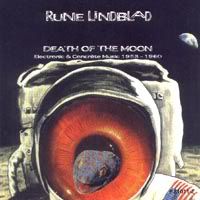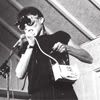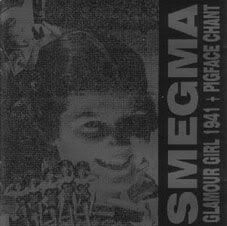
Pogus, 1997; available
8 tracks, 73:54
The late Rune Lindblad (1923-1991) was a true pioneer, yet he's all but unknown to the majority of music fans and scholars. Actually, none of the pieces collected here were released in any form until 1988! This is a true shame, for this disc contains some incredible examples of mixed electronic music. By "mixed" I mean Lindblad used both pure electronic and concrete sources. True, contemporaries like Dockstader and (earlier) Stockhausen did the same thing; however, at the time most composers favored one technique or the other, and they tended to be outspoken against the other. Audiences and critics hated his music at the time, but now it stands as a truly astounding body of work. As the title makes clear, DEATH OF THE MOON covers 1953 to 1960. The sound quality can be murky at times, but better than expected given the age of the source material. The pieces are presented in chronological order, and they definitely do plot a progression in technique and resources. My absolute favorite of the bunch is the incredible "Evening (Op. 7)"* from 1956. It's truly difficult to describe, but suffice to say it has some startling no wave-esque guitar alongside Lindblad's unidentifiable concrete sounds. The lengthy "Optica 1 (Op. 16)", composed from 1959 to 1960, also deserves mention. Apparently using actual video tape (as sound source or recording medium, I'm not sure), this squelchy sequence of bursts and blips sounds oddly like much-later glitch! From a technical standpoint, "Party (Op. 1)" from 1953 is the most primitive track, sounding like little more than bits of conversation fading in and out of a bed of feedback; rest assured, it's still a great listen! Early industrial music is the best possible comparison, and considering the age and obscurity of these pieces, it's sadly not shocking that Lindblad wasn't hailed as a VERY early pioneer of that genre. Now that his catalog is more available, everyone with even a passing interest in early electronic music can experience true masterpieces of the genre. Pogus' companion volume OBJEKT 2 covers 1962 to 1988, while the Swedish lable Elektron put out a two-disc eponymous compilation collecting unreleased pieces from 1960 to 1980. Both of these are as highly recommended as DEATH OF THE MOON. While harder to find, the 1975 LP PREDESTINATION is also worth hearing, but be aware it favors electronics over concrete sounds.
*With rare exceptions, most Lindblad compositions end in "(Op. #)".


